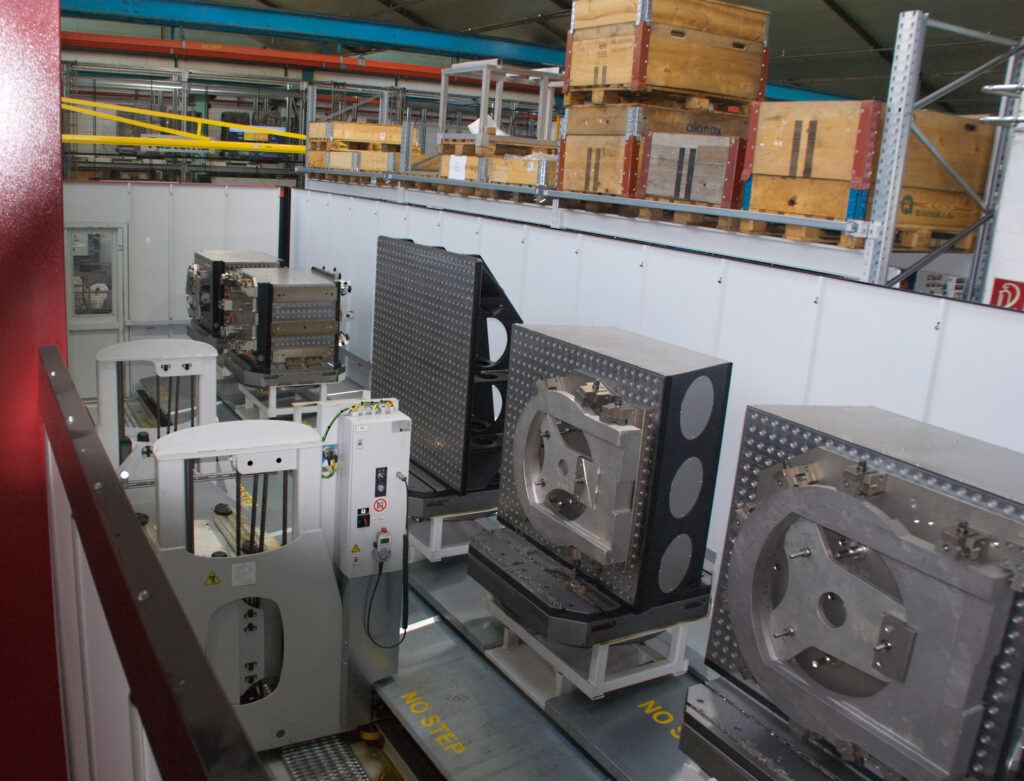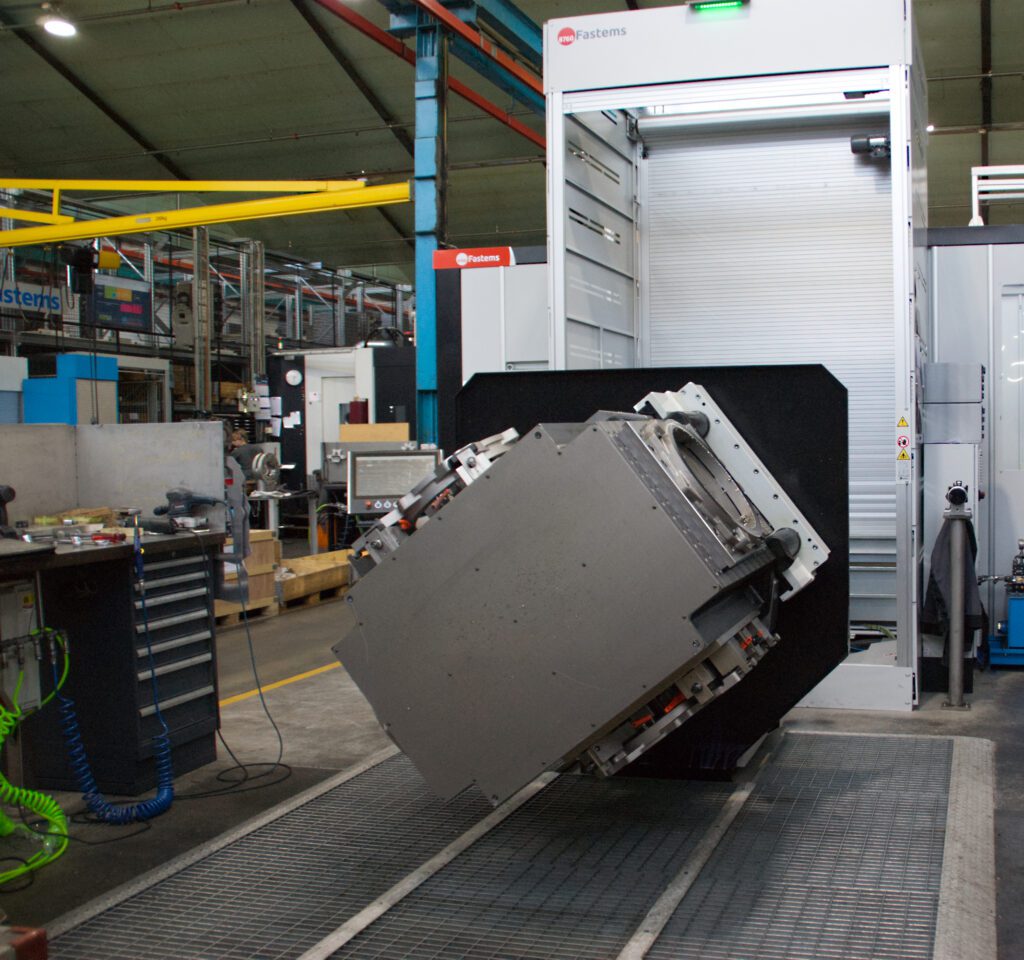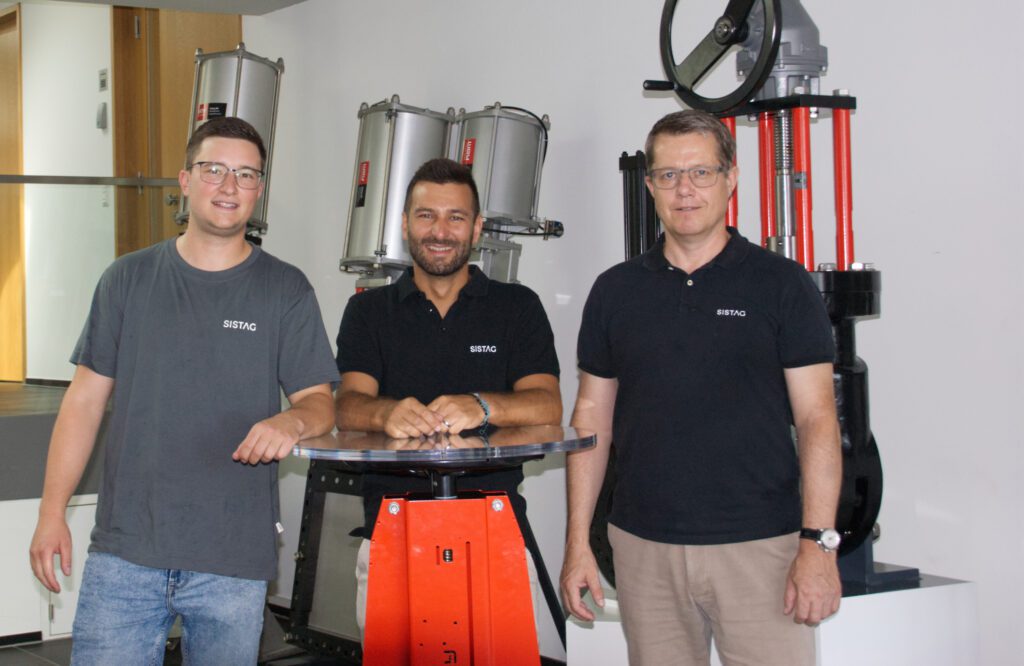Sistag Orchestrates Both Automated and Stand-Alone Operations with MMS
Sistag AG in Switzerland relies on flexible automation and digital manufacturing tools to fully connect its manufacturing—including both the automated machining and stand-alone processes.
Swiss Sistag AG manufactures valves for demanding applications in water treatment and industrial use. At their Eschenbach site in Lucerne, Switzerland, around 140 employees produce around 20,000 valves per year.
“Our valves are used globally – wherever there are solids in liquids,” tells Christian Zberg, Head of Technology at Sistag. The flat plate gate valves are the core products of the company. “Originally developed for the paper industry, these valves can be also used in wastewater treatment, petrochemicals and mining,” explains Zberg.
FMS Integrates and Automates Machining
In 2005, Sistag invested in their first flexible manufacturing system (FMS). Their Multi-Level System (MLS) from Fastems originally automated one OKK HM 630 machining center. During the past 20 years, the system has expanded with an additional OKK machine, undergone a full modernization, and upgraded to a newer version of Manufacturing Management Software (MMS). Today, the system accommodates 72 machine pallets and 80 material pallets.
The automation control MMS handles the entire planning, control, and monitoring of the production in the FMS. MMS automatically plans production 96 hours in advance and adapts to changes in real time, making it the most advanced automation control software in the market.
Zberg says: “The open interfaces of MMS allow connecting machines from various manufacturers, which is a major advantage. And it’s not limted to machines – it integrates with different devices and data systems as well. We as customers can fully rely that our processes of today and tomorrow can be connected.”


In 2023, Sistag invested in a larger payload FMS from Fastems. Their Flexible Pallet Container (FPC) is integrated with OKK HM 1000 machining center and has capacity for six 3000-kilogram machining pallets.
Pascal Metry, Production Manager at Sistag explains: “We use MLS for smaller, 50-400 mm wide flat plate valve housings, and there our weekly spindle time per machine is around 110 hours. Our FPC is dedicated for producing the large housings that are 450-800 mm wide.”
Work safety and ergonomics are a special area considered in Fastems’ automation systems. Both FMSs at Sistag are equipped with tilting and rotating loading stations, allowing for operators to comfortably clamp and unclamp parts to and from the machining pallets.

Connecting Stand-Alone Processes in Automation’s Production Planning
Sistag has an ambitious production digitization strategy to orchestrate varying shop floor operations and increase manufacturing transparency. Their goal is to use MMS as manufacturing execution software (MES) to plan, control, and monitor not just the automation systems but the entire production. This means including also manual workstations and older stand-alone machines in the MMS planning.
Work Cell Operations (WCO) is an MMS addition that enables organization and capacity tracking of stand-alone machines and manual operations. With WCO included, MMS at Sistag automatically plans and prioritizes production in ALL systems AND individual machines orders after fetching orders and due dates from Sistag’s ERP. The shop floor employees receive digital work lists on tablets, and they can mark tasks and operations in manual work cells completed as they go.
Everyone Knows What to Do – All the Time
“We have purchased 11 WCO licenses and assigned them to specific work areas. For example, we have assigned three licenses to our stand-alone lathes, and summarized our turning shop as one department in MMS. Another example is our older, non-networked milling machine that is now also part of MMS production planning,” explains Joel Zemp, Deputy Production Manager and MMS Expert at Sistag.
According to Metry, using tablets on the shop floor works well for the team: “It’s important for employees to know that we’re not trying to control them – we make everyone’s life easier with the organized production planning and execution. Our employees always know exactly what to do, without me the production manager constantly having to check in. WCO removes a lot of stress and hustle in everyday production. Since I’m always informed about what’s happening in production, I can support where I’m really needed.”

Real-Time Data and Production Transparency Improve Teamwork
For Zberg, increased manufacturing transparency is particularly important: “We must be able to map all ongoing activities at any time.”
With WCO, communication between the work preparation and employees onsite runs almost in real time. Everyone works according to the same information and deadlines, and reliability of information has significantly improved.
“In the past, we often calculated overly optimistic target times for operations, which led to unrealistic production planning. Now we have concrete, valid data, allowing us to plan much more accurately, both in terms of machine utilization and manufacturing cost calculation. Transparency has increased enormously, and the information gathered from manufacturing opens valuable improvement opportunities,” says Zberg.
Timely Orchestration of Tens of Thousands Manufacturing Operations
Sistag runs about 10,000 to 12,000 production orders per year, each consisting of five to ten manufacturing operations. In the past, only the manufacturing start and end dates could be planned, and everything in between was almost impossible to manage due to lacking data.
“MMS plans tens of thousands of operations based on information from our ERP, which we use to calculate individual operations per order. This enables us to set deadlines for different operation phases, which then flow into MMS – and MMS sends real-time data back. For example, a macro we programmed gives work preparation team a notification if the target time of an order deviates more than 10 percent from the actual time. This allows us to react immediately,” explains Zberg, who wants to maintain strong production expertise in-house.
All this is possible with a solution that gathers and processes data from all manufacturing operations. “From our perspective, MMS with WCO is exactly the right technology to support our core competence.”
“We’re on the Right Track to Meet Further Goals”
The project is currently on deployment, with Sistag’s team completing data in full speed—from ERP-MMS interface to ERP master data for orders and individual operations, to moving master data to MMS, and connecting multiple machines to WCO.
Zberg is very satisfied with the results achieved so far: “We’re on the right track with our production digitization strategy: we know where we want to go and what to do to get there. We’ve laid the important foundations for fully connected manufacturing with the help of MMS and WCO. We are expecting to see further increase in our productivity, for example getting longer lights-out manufacturing periods during weekends.”